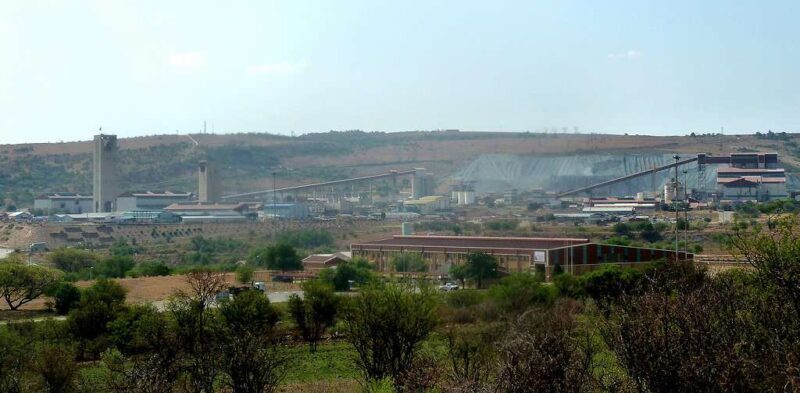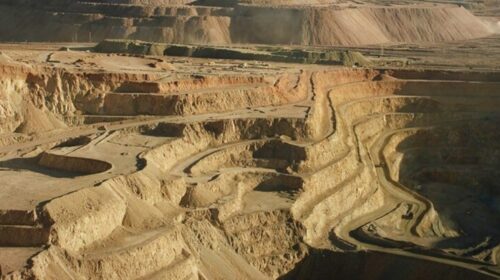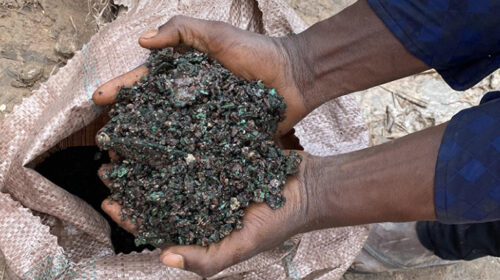The Deepest Gold Mine in the World Is 2x Deeper than the Grand Canyon
Imagine descending 2.5 miles into the earth just to get your hands on a precious metal. The descent takes an hour and is done in stages.
The tunnel walls are so dangerously hot that ice is pumped down from above to keep the temperature at safe levels. This is the Mponeng Gold Mine in South Africa, the deepest gold mine in the world.
How Deep is the Deepest Gold Mine in the World?
Owned by Harmony Gold Mining, the Mponeng mine extends 2.5 miles (4 km) beneath the surface. That distance is twice as deep as the Grand Canyon and ten times as tall as the Empire State Building.
Each day, 4,000 miners hop aboard elevators that fit 120 people at a time to descend into the mine. The first elevator takes them 1.6 miles down. By the end of the first descent, the elevator reaches speeds of half a mile per minute.
A second lift descends further into the mine. And finally, they must go on foot or by vehicle to reach the greatest depths.
Tunnels Are Hot
When you dig deeper toward the earth’s core, temperature rise. In the deepest parts of the mine, temperatures reach 140 degrees Fahrenheit.
To keep it tolerable, an icy slur mixed with salt is pumped from the surface to below. Fans then blow across the ice, creating an internal weather system that keeps temperatures around 86 degrees Fahrenheit.
What Keeps Workers Safe in the World’s Deepest Gold Mine?
Ultra-deep mining can destabilize surrounding rock, leading to seismic activity. This can cause cave-ins, ground collapse, and rock bursts. Rock walls lined with reinforced spray concrete and covered with diamond-mesh netting help to keep the tunnel walls stable.
Additionally, seismic activity is monitored and workers are ushered to safety if needed. Gold mining is a dangerous job, and despite the safety measure, fatal accidents sometimes occur.
Where is the Mponeng Gold Mine Located?
The Mponeng Gold Mine is located in the Gauteng Province of South Africa. It’s within the Witwatersrand, a rocky ridge of sedimentary rock near Johannesburg and the largest goldfield in the world.
The Witwatersrand Basin is an underground geological formation that contains the world’s largest known gold reserves. The discovery of the Witwatersrand Basin and the gold within caused a gold rush leading to the founding of Johannesburg.
It’s estimated that nearly half of the world’s gold was mined from the depths of Witwatersrand.
What’s the Output of the Mponeng Gold Mine?
Mponeng excavates around 6,000 tons of rock per day. Then, the rock is then extracted for gold. In 2022, it’s estimated the mine produced nearly 200,000 ounces of gold.
Mine operations will continue until output is reduced to levels that are no longer profitable. The Mponeng Mine will be active until 2029.
Illegal “Ghost” Miners Live Full-Time in the Mine
It’s likely that 10% of gold coming out of South African gold mines has been stolen. Journalist Matthew Hart, author of Gold: The Race for the World’s Most Seductive Metal, describes in the book how criminal syndicates send people into the mine posing as miners to steal gold.
Because security is so tight, once in, they stay for months. The “ghost” miners are out of the sunlight for so long, their skin turns to a pale shade of white.
The World’s Only Single-Species Ecosystem Lives in the Mine
Discovered in water pulled from the mine was a fascinating bacterium. The extremophile bacteria Desulforudis audaxviator is unique in that it doesn’t share its ecosystem with any other living thing. Instead, it’s entirely self-sufficient, producing everything it needs to survive. These bacteria live in total darkness, completely alone and without sunlight or oxygen.
How Do Gold Mines Affect Wildlife?
Gold mining can have serious effects on the environment and the animals that live nearby. Further, some of the contaminants associated with mining (arsenic, lead, and cyanide) can be deadly to animal populations.
Mining also destroys animal habitats, contaminates water, and causes a loss of plant life. It can also be a source of air pollution. Contamination of the soil, water, and air can affect humans in addition to animals, and plants.
What Wildlife Lives Near the Mponeng Mine?
The Gauteng province is a busy hub with a population of over 9 million. It’s also a diverse landscape with mountains, game reserves, waterfalls, forests, and streams. Many different animals make their homes in the land around the Mponeng Mine.
A large wildlife sanctuary, the Dinokeng Game Reserve is located in Gauteng about two hours northwest of the Mponeng Mine. The reserve is home to many animals including:
.Lions
.Leopards
.Elephants
Cape buffalo
.Rhinoceros
.Cheetahs
.Giraffes
.Zebras
.Brown hyenas
.Wildebeests
.Hippopotamuses
.Ostrich
.Osprey
.Blue cranes
.Herons
SOURCE:https://a-z-animals.com
![]()





